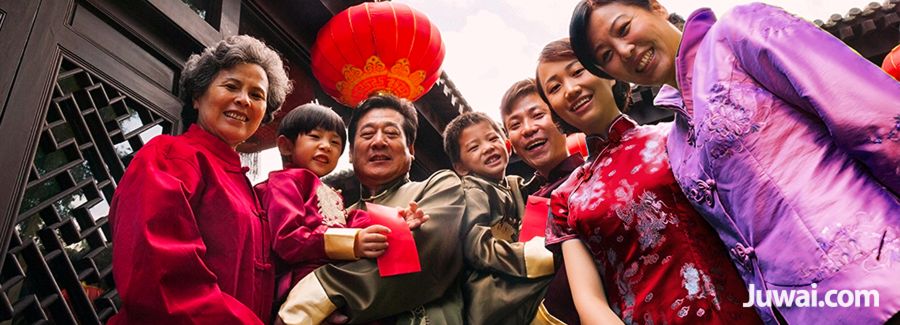You've successfully copied this link.
Here are 11 holiday celebrations from around the world

Whether you’re living overseas or just traveling for a holiday season vacation, the world is full of opportunities to escape the usual Christmas routine. Here are 11 celebrations from around the world courtesy of the reporters and editors at International Living, each offering their own unique flair of festivities.
Costa Rica - Tamale Making
A classic Christmas holiday tradition in Costa Rica is tamale making, a family and multi-generational matter. “Tamales are one of the most popular Christmas traditions in Costa Rica,” said Kathleen Evans, IL Coastal Costa Rica Correspondent. “Tamales are made from corn flour and are filled with a variety of different ingredients, such as potato puree, rice, vegetables, garlic and onions, and shredded pork or chicken or beef, all wrapped in banana leaves and tied with string into squares and boiled. Although officially in the northern hemisphere, December is considered “summer” in Costa Rica because the rainy season has ended, and the kids are out of school. That means immediately after Christmas the families in the cooler Central Valley flock to the beaches to soak up the sun.
Colombia - Little Candles Night
Christmas in Colombia is a celebration of lights, food, music, family and friends that lasts from early December until mid-January. Traditions and celebrations vary by region and city, but all are held with the idea of enjoying the season. “One of the most interesting celebrations is Little Candles Night to commemorate the eve of the Immaculate Conception and the unofficial start of the Christmas season for the entire country,” said Nancy Kiernan, IL Colombia Correspondent..
Ecuador - The Pase del Niño Parade
“The holidays are absolutely my favorite time of year in Cuenca, especially the Pase del Niño parade,” said Donna Stiteler, IL Cuenca Correspondent. “The Pase del Niño (Passing of the Child) starts with a Christmas Eve parade downtown but is actually a three-month-long activity, beginning the first Sunday after Advent and continuing to Carnival in early March. Hundreds of children watch the parade dressed in homemade costumes while watching bands, dancers, stilt walkers, street performers and all types of interpretations of biblical characters. The parade has approximately 50,000 participants, with about 200,000 people watching from sidewalks or balconies."
Belize - New Year’s Eve
“New Year’s Eve is a huge night in Belize,” said Laura Diffendal, IL Belize Correspondent. “There’s a party in every major town, with fireworks and vast parties. Belize is a very festive country, and everyone gets behind the celebrations. In Placencia, the main party is in the Central Park area with many vendors, local food and drinks, and bars line the zone.
After the party in the park, the crowd tends to move to the many beachfront bars and docks to settle in for the fireworks. Of course, the party doesn’t end after the fireworks,
it goes on late into the night or into the next morning.”
Mexico - Three Kings Day
Celebrations usually take place on Christmas Eve in Mexico, with carols, a big meal, and maybe mass at midnight. However, a few days later is an even bigger day. “Three Kings Day or El Dia de Reyes, is an important celebration in Mexico,” said Don Murray IL Riviera Maya Correspondent. “Recognised on 6 January, this is the day that many locals exchange gifts to celebrate the biblical story of three kings visiting baby Jesus and is the traditional day children receive Christmas gifts."
Panama- Burning of Effigies
New Year’s is very interesting in Panama. In rural parts, people tend to burn effigies representing the old year. It’s their way of letting go of the past to embrace the new year. Effigies are often dressed as celebrities or public figures. “On 1 January, Panamanians do more than usher in the coming year,” said Jessica Ramesch, IL Panama Editor.
“It’s also a time to purge the evils of the past. Tradition in rural parts is not to make New Year resolutions, but to let go of negativity with a symbolic act: the burning of effigies.
Ones sold by craftsmen that bear the likeness of “naughty” celebrities or politicians and can cost up to US$ 300. The dolls are set on fire during the first minutes of 1 January. Stand back.”
Ireland - Wren Boys
The Wren is a tradition where men and boys paint their faces and dress in old clothes and straw hats, traveling from house to house in rural areas playing music, singing, and dancing. It is celebrated in Ireland on St. Stephen’s Day, 26 December. In previous times, the wren bird was hunted on this day and an effigy of which was carried about in a holly branch or cage.
The ritual is associated with the belief the bird betrayed Irish soldiers fighting enemies by beating their wings on their shields, making noise and waking the sleeping adversaries, and so saving the camp.
It is also held responsible for betraying St. Stephen, the first Christian martyr, by flapping its wings to attract his chasers when he was hiding.
Portugal - Christmas Eve Celebrations
“As you might expect in a predominantly Roman Catholic country, Christmas still retains religious significance for much of the population,” said Tricia Pimental, IL Portugal Correspondent. “That’s not to say that Santa Claus, known here as Pai Natal, doesn’t make an appearance, though. As you also might expect, food and drink play an important role in the celebration of the holiday.
On Christmas Eve families gather together for their consoada, a time to visit when traditionally bacalhau (dried, salted cod), is eaten together with boiled potatoes and cabbage.
Often people attend church at midnight afterward. During the Missa do Galo (Mass of the Rooster), a representation of the Baby Jesus is finally placed in the presépio, or manger scene, every church has had adorning its interior or exterior for the past weeks.”
Spain - Eating Grapes at Midnight
“In Spain, people usually celebrate on Christmas Eve with a dinner late at night - traditionally something with fish or seafood,” said Glynna Prentice, IL Editor. “This is followed by midnight mass (the Misa de Gallo) or alternatively just stay at dinner. Gift-giving is across two days. Children often get to open one gift on Christmas Eve and then the rest on Christmas Day which is a day for being with family. There are no Boxing Day celebrations in Spain, but New Year’s Eve is party time, and eating grapes on the stroke of midnight. The tradition is to try to eat one grape for each stroke of midnight, and to finish all 12 grapes by the last stroke. If you do, you have good luck for the next year.”
Bali, Indoniesia - Galungan
“For the Hindu Balinese, Galungan is observed twice a year based on the Pawukon 210-day calendar,” said Josephine Brierley, IL Bali Correspondent. “This year, Galungan will fall on 26 December, which means the whole island will be celebrating in their own very special way.Galungan is a Balinese Holiday which celebrates the victory of dharma over adharma, (the triumph of good over evil).
As the legend goes, the Hindu God, Indra, battled with the Balinese king, Mayadenawa, to ensure the Balinese people were entitled to live in the Hindu way.
It’s a big happy celebration where people eat good food, then dress up in their traditional clothing and visit temples and their families. The Balinese believe their ancestors return to visit earth on this day, and it’s a day of giving thanks and remembering those who have left. The families must be welcoming and hospitable to the spirits through prayers and offerings. The local temples are all decorated brightly and are crowded and colorful."
Thailand - New Year’s Eve Lanterns
“Though Thailand’s New Year (Songkran) happens in April, Thai’s love a party and have embraced New Year’s Eve celebrations with all-out gusto,” said Michael Cullen, IL Thailand Correspondent.
“If you are in Bangkok, expect spectacular firework displays over the Chao Phraya River which are best viewed from the cities renowned skyscraper rooftop bars and restaurants.
This is repeated in regional cities and popular beach and island destinations throughout the Kingdom. For a more cultural New Year’s Eve, try Chiang Mai where thousands of people parade along the streets in the old town holding colorful paper lanterns with lit candles inside.”


